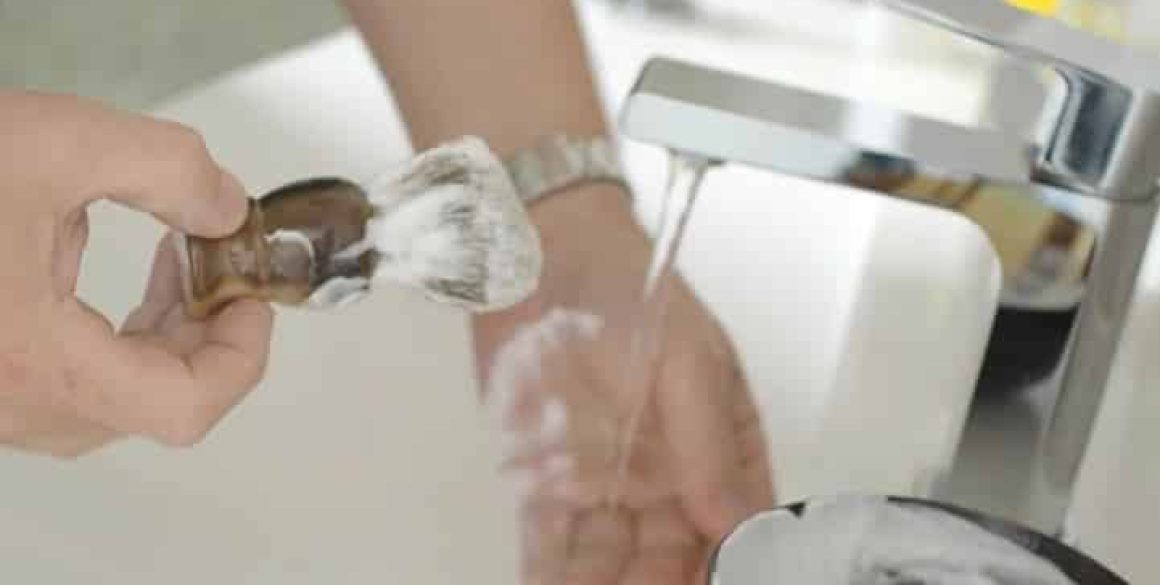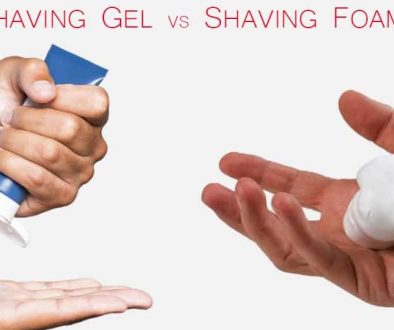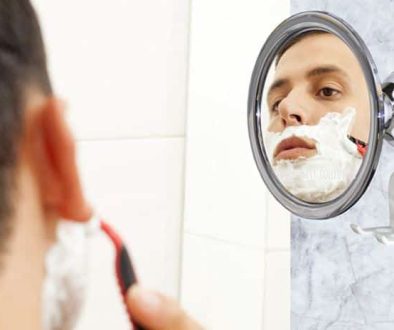How To Clean a Shaving Brush After Use
Finding an ideal shaving brush can be tough. As such, when you do find a good one, don’t be lazy and ensure you clean it after every use. While your shaving brush may look visibly clean, the buildup of bacteria, dirt, or oil inside can make it a treasure trove of germs!
Therefore, you should adopt a good habit of deep-cleaning routine for your brush once you’re done shaving. Read on to find out how to clean your shaving brush after every use.
1. Rinse It Thoroughly
Like your razor, rinsing your shaving brush thoroughly ensures that all the residue is completely removed.
For a gentle rinse, keep the brush under lukewarm water and squeeze the bristles lightly to clean it of any soap, suds, or extra hair. Rinse your shaving brush after every use and keep the water running across the bristles until it turns crystal-clear.
A thorough rinse can also kill the light unpleasant smell that often comes from newly bought animal-based brushes.
2. Air-dry The Brush
After rinsing, it’s time to air-dry the shaving brush. Do this instead of using a hairdryer. Improper or poor drying of the shaving brush can cause mildew or weaken the bristles due to the dampening of the adhesives used in the brush.

To dry the brush, drain the excess water by tapping it on the washbasin a few times. Once the water is drained, hang the shaving brush upside down on a shaving stand.
Finally, rub the brush on a clean cotton towel to ensure no water is left on the bristles before you store your shaving brush.
3. Disinfect The Shaving Brush
Here comes the most crucial step of cleaning a shaving brush after every use. Rinsing the brush can clean the visible unwanted residue but it won’t sterilize the brush.
No matter how much care you take while using the shaving brush, a pool of filthy germs can still remain stuck to the knot or bristles of the brush.
To deal with this, you need a deep cleaning acidic shampoo or homemade solution that can disinfect your brush right off the bat. If you own an animal brush like synthetic fiber or badger shaving brush, then using a pet shampoo may get the job done. This is because most shaving brushes are made with animal hair so pet shampoo is ideal.
Either cleansing mixture you use, make sure you follow the guidelines as mentioned below.
For home-made solution:
- To make a homemade acidic solution, you can use simple, commonly used acids such as white or Apple cider vinegar, Lemon extract, coke, etc.
- Make sure the acid you choose has a pH level ranging from 3-6 and does not contain a bad odor.
- Take 10% acidic content and dilute it with 90% mild distilled water, then dip the shaving brush for nearly 10 minutes in the mixture.
- Pump the brush gently a few times to remove all the debris of the brush from the base to the tip.
For home-made solution:
- To make a homemade acidic solution, you can use simple, commonly used acids such as white or Apple cider vinegar, Lemon extract, coke, etc.
- Make sure the acid you choose has a pH level ranging from 3-6 and does not contain a bad odor.
- Take 10% acidic content and dilute it with 90% mild distilled water, then dip the shaving brush for nearly 10 minutes in the mixture.
- Pump the brush gently a few times to remove all the debris of the brush from the base to the tip.
For shampoo:
- The shampoo you are using should be acidic based so that it can remove the hard residue stuck to the brush.
- Rinse the brush thoroughly so that no bristle remains dry during the deep cleansing of the shaving brush.
- Next, add a good quantity of liquid shampoo and make a lather to ensure that the bristles are completely soaked in the shampoo.
- Then, smoothly swirl the brush in a circular motion unless the water turns soapy. It will clear out all the stains and help in getting rid of the mildewed smell of the brush.
- Lastly, wash the brush with mild, clean water and dry it by following the steps mentioned above.
4. Scrub The Brush
Scrubbing the brush is an optional step in the cleaning regime. You can skip it or do it once in a while if you feel the need to.
This step can work amazing for shaving brushes that have been used for over a year or more and have very stubborn dust and debris stuck to it.
By using a quality scrub for your shaving brush, you can scrape out the unwanted residue from the knot to the tips of the brush.
Here is a quick overview of the process:
- For effective scrubbing of the brush, follow the same rinsing steps as you performed while shampooing the brush.
- Then, take a good-quality scrub on a fresh toothbrush and rub it along the bristles of the shaving brush. Don’t be too harsh while scrubbing as it may damage the bristles or make them rough that might irritate you during shaving.
- Leave the shaving brush in a bowl filled with warm water for 5-10 minutes and wash it with tap water once the brush is thoroughly scrubbed.
Following the recommended steps to clean your shaving brush after use will make a huge difference. Remember, you are using this on your face.
From cleaning it of soap scum, shaving cream residues, stains, that new brush odor, hard water deposits to sanitizing it thoroughly, all are important.
Why Should I Clean My Shaving Brush
Taking care of your shaving brush by cleaning it regularly prevents all the harmful effects of bacteria buildup from invading your skin and causing infections.
With that said, here are some helpful maintenance tips for you to increase the life of your shaving brush:
- Always use mild to lukewarm water for rinsing or soaking the shaving brush while shaving or cleaning. In case of a hot shave, take a bowl of warm water to rinse the brush after every use so that the sensitive bristles don’t lose strength or curl up.
- Be very gentle with the brush follicles both during shaving or cleaning and drying of the shaving brush.
- Never twist, flick, and touch the bristles of the brush if you want to use the shaving brush for many more shavings.
When Should I Clean The Shaving Brush?
There’s no decided time regarding when you should clean your shaving brush. It depends on the current condition of your brush and the frequency with which you use it.
Some men clean their brush right after buying it to remove the smell of a new shaving brush then they also clean it after every shave. Some men clean their brush when they notice a small residue buildup. Both are fine, just don’t leave it for too long – use your best judgment.
In any case, stained, rough, and weak shaving bristles with lots of residues immediately call for a deep -cleaning of your shaving brush.
Should You Wash A Shaving Brush?
The answer is yes. A new shaving brush should be rinsed with warm water before its first use and must be rinsed out every time it is used. Lather or hair particles should not be allowed to build up between your shaving brush bristles.
How Often Should You Clean A Shaving Brush?
Your shaving brush should be routinely rinsed after every use and then washed more deeply about every month. Shampoo can be used and works wonders for cleaning out shaving brushes and keeping them soft. First, lather it on thoroughly into your brush bristles. Then, properly rinse it out. Repeat as needed. Regular cleaning is needed to clear out shaving cream build-up and maintain the brush for as long as possible.
How Do You Store A Shaving Brush After Use?
Shaving brushes should be stored in a properly ventilated area. It is recommended to set them in a stand, facing up or next to a window to allow the residual moisture from washing to evaporate. When they are not properly aired and dried, shaving brushes will start to stink, especially if they are made from animal fur.
Conclusion
A clean shaving brush means a clean shave every time. Having a good clean, brush means you can smoothly spread the shaving cream on your face without fear of bacteria and other germs. Therefore, investing time to a shaving brush cleaning routine is as important as all other aspects of shaving.



